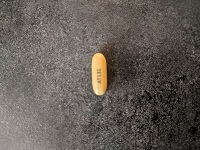

Dutasteride (brand name Avodart) is superior to Finasteride (brand name Propecia) when it comes to hair growth. See my old post on Dutasteride for hair loss reviews for numerous reader testimonials.
However, there is a massive difference in Dutasteride’s effectiveness in reducing serum dihydrotestosterone (DHT) levels versus the more relevant scalp DHT levels.
Dutasteride Scalp DHT Reduction of only 50%
While Dutasteride 0.5 mg/day lowers serum DHT levels by over 90 percent, it only lowers scalp DHT levels by around 50 percent. Per a widely cited 2006 US study from Olsen et al, Dutasteride 0.5 mg per day suppressed serum DHT concentrations by 92% and scalp DHT levels by 51%. Meanwhile, Finasteride 5 mg reduced serum DHT levels by 73% and scalp levels by 41%. Full study is here.
Perhaps of more interest, Dutasteride 2.5 mg per day suppressed scalp DHT levels by 79%. See the below chart (front the Olsen study) and its X-axis. Note that for hair loss, the recommended dosages are 1 mg/day for Finasteride or 0.5 mg/day for Dutasteride. For benign prostatic hyperplasia (BPH), the recommended dosages are 5 mg/day for Finasteride (brand name Proscar) or the same 0.5 mg/day for Dutasteride. The half-life of Finasteride is 6-8 hours, but a much longer 4-5 weeks for Dutasteride.
I am a bit too wary of side effects and currently just take 0.5 mg/day of Dutasteride twice a week (instead of daily). In reality, if you truly do not care about side effects and really want to risk it, 2.5mg per day or higher seems to be the way to go. I would never go that far, tempting as it is. Most doctors will also be unwilling to prescribe you such a high dose.
While writing this post, I notice that the above Olsen study from 2006 has been referred to in many later studies and reviews. But there seems to be little to no new research on Dutasteride’s impact on scalp DHT levels. This is quite surprising, and if you find any such newer research, please post a link in the comments.
In the Olsen paper, 416 men from ages 21 to 45 years were randomized to receive: Dutasteride 0.05,
0.1, 0.5 or 2.5 mg; finasteride 5 mg; or placebo; all daily for 24 weeks. So it was a decent sample size.
Are Injections and Topicals more Effective at Reducing Scalp DHT levels?
This realization has made me evermore curious about mesotherapy with dutasteride (aka dutasteride injections). I wonder how much more effective a direct scalp injection is at reducing scalp DHT levels? I suppose it depends on the dosage and frequency of the injections.
I also wonder if topical Dutasteride and topical Finasteride can reduce more scalp DHT in comparison to their oral counterparts? This would be very hard to study, since so many companies now produce their own versions of topical Fin or Dut.
Note that while Finasteride is a selective inhibitor of the type II and type III isoforms of the 5α-reductase enzyme, Dutasteride inhibits all three isoenzymes of 5α-reductase. The latter grows more hair than the former, but also has a higher chance of giving you side effects. Most studies suggest that serious long-lasting side effects occur in less than five percent of patients.
Interestingly, both oral Finasteride and oral Dutasteride impact estrogen and testosterone levels in a similar manner in the average adult.